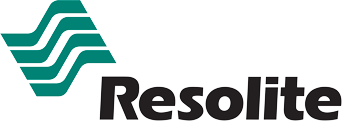Corrosion is a constant challenge across multiple different industries. It can impact the longevity and performance of the materials you use in construction, transportation, and infrastructure. Understanding how corrosion occurs and how to prevent it can help you get long-term durability. While corrosion is usually associated with metal degradation, advances in material science, including FRP from Stabilit America, provide highly effective solutions for applications that demand superior resistance to environmental and chemical exposure.
What Is Corrosion?
Corrosion is considered an electrochemical process that deteriorates different materials. It commonly happens with metal when it interacts with environmental elements such as moisture, oxygen, salts, and industrial chemicals. This degradation can take a few forms, from uniform surface oxidation to deep pitting and structural weakening. While rust is the most recognized form of corrosion, affecting iron and steel, other metals and materials are also susceptible to different types of chemical and environmental breakdown.
At its core, corrosion happens because metals naturally try to achieve a more stable state. Pure metals, especially those higher in the reactivity series, are prone to oxidation, meaning they lose electrons when exposed to air, water, or corrosive substances. Over time, this process weakens the material, compromising structural integrity and requiring costly repairs or replacements.
Factors That Contribute to Corrosion
Several conditions accelerate the rate of corrosion in metal structures and equipment where you might utilize metal parts. Common contributing factors include:
- Environmental Exposure: Continuous contact with oxygen, moisture, and airborne pollutants increases the risk of oxidation and can lead to a gradual surface degradation. Coastal and industrial areas that have high humidity levels and salt content exacerbate the process.
- Chemical Interactions: Exposure to acids, bases, or industrial chemicals weakens protective oxide layers. As a result, this makes metals more vulnerable to corrosion. Processing plants, wastewater facilities, and manufacturing sites have a higher risk level.
- Temperature Fluctuations: High temperatures can accelerate oxidation, while rapid cooling can lead to stress fractures that further expose metals to corrosive agents.
- Structural Design: Crevices, joints, and concealed areas trap moisture and contaminants, creating an environment where corrosion can easily go unnoticed as they develop.
Commonly Affected Materials
While all metals are susceptible to some degree of corrosion, the rate and severity that it happens depend on the composition and environmental exposure.
Metals Prone to Corrosion
Certain metals are more susceptible to corrosion because of their chemical composition and environmental exposure. While some degrade gradually, others can weaken rapidly when exposed to moisture, chemicals, or extreme conditions.
- Iron and Steel: Highly reactive in humid environments, iron and steel form rust when they get exposed to moisture and oxygen.
- Copper and Brass: These materials start to develop patinas over time, especially in marine locations where salt exposure accelerates corrosion.
- Aluminum: Although aluminum is naturally resistant due to its oxide layer, it does corrode in highly acidic or alkaline conditions.
- Zinc: Zinc is often used as a protective coating, but it can degrade over time in aggressive environments.
Corrosion-Resistant Materials
Not all materials corrode at the same rate, and some are designed to resist environmental and chemical damage. Choosing the right option can significantly reduce maintenance costs and structural failures.
- Stainless Steel: Materials like stainless steel contain chromium, which forms a passive layer that prevents oxidation. This property makes it a preferred material for applications requiring long-term durability.
- Titanium: Titanium is very resistant to corrosion, even in high-temperature and aggressive chemical environments.
- FRP (Fiber-Reinforced Plastic): Unlike metal, FRP does not corrode, making it an ideal alternative for environments where long-term exposure to moisture and chemicals is expected.

The Role of FRP in Corrosion Prevention
While traditional metals have been widely used in construction and industrial applications, FRP offers a highly effective alternative for corrosion-prone environments. FRP materials are naturally resistant to moisture, chemicals, and oxidation, making them an excellent choice for structures exposed to harsh conditions.
Unlike metal, FRP does not rely on coatings or galvanization to resist corrosion. Instead, it is engineered to withstand exposure to aggressive environments, reducing the need for maintenance and costly replacements. This advantage makes FRP an increasingly preferred material in applications such as industrial piping, transportation panels, and structural reinforcements where corrosion resistance is a priority.
Types of Corrosion
Different types of corrosion impact materials in various ways. Recognizing these patterns helps in selecting the appropriate materials and preventative measures.
Uniform Corrosion
Occurs evenly across a metal surface due to consistent exposure to air and moisture. While predictable, it weakens materials over time, requiring protective coatings or replacement.
Pitting Corrosion
Manifests as small holes or cavities on a metal surface. This localized damage is dangerous in structural components since it compromises the integrity of your materials, but it isn’t immediately visible.
Crevice Corrosion
Develops in confined spaces where moisture and contaminants get trapped. Areas such as bolts, joints, and metal fittings are extremely susceptible.
Galvanic Corrosion
Happens when two different metals come in contact in a conductive environment, causing one to corrode at an accelerated rate. You usually see this in structures that mix materials like steel and aluminum.
High-Temperature Corrosion
Affects metals exposed to extreme heat, leading to oxidation, sulfidation, or carburization. Power generation and petrochemical processing facilities deal with this type of corrosion most often.
How to Prevent Corrosion
For effective corrosion prevention, you need a combination of proper material selection, protective coatings, and environmental control.
- Choosing Corrosion-Resistant Materials: Stainless steel, titanium, or FRP can extend the lifespan of your structures that are exposed to harsh conditions.
- Protective Coatings: Applying paints, sealants, or galvanization provides an additional layer of defense against oxidation and chemical exposure.
- Regular Maintenance: Routine inspections and cleaning help remove contaminants that accelerate corrosion and prevent long-term damage.
- Proper Drainage and Ventilation: Reducing trapped moisture in structural components helps minimize localized corrosion risks.
- Cathodic Protection: Using sacrificial anodes, including zinc or magnesium, prevents more critical components from corroding.
Investing in Corrosion-Resistant Solutions With Stabilit America FRP Panels
Corrosion is one of the leading causes of material degradation across all industries. It can cause costly repairs, compromised safety, and operational downtime. Choosing the right materials, like FRP panels from our team at Stabilit America, provides superior durability so you can reduce the impact of corrosion on your products. Whether you’re managing industrial infrastructure, transportation, or construction projects, selecting corrosion-resistant materials provides long-term performance, lower maintenance costs, and greater reliability in demanding environments. For more information, explore Stabilit America’s range of corrosion-resistant FRP solutions to enhance durability in your applications.


